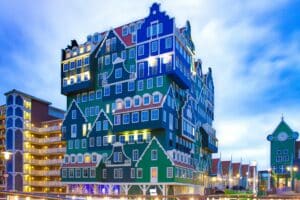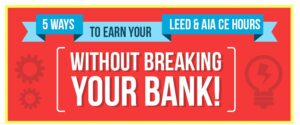What is BREEAM?
BREEAM was founded almost three decades back in the United Kingdom in 1990 by the Building Research Establishment (BRE), and it stands for Building Research Establishment Environmental Assessment Method. It is one of the most popular and internationally recognized green building rating systems in the world that sets standards and measures the environmental performance of buildings – both new as well as existing.
In other words, BREEAM is the world’s leading sustainability assessment method for master-planning projects, infrastructure and buildings. It recognizes and reflects the value in higher performing assets across the built environment lifecycle, from new construction to in-use to renovation and refurbishment.
BREEAM does this through third party certification of the assessment of an asset’s environmental, social and economic sustainability performance, using standards developed by BRE. This means BREEAM-rated developments are more sustainable environments that enhance the well-being of the people who live and work in them, help protect natural resources and make for more attractive property investments.
BREEAM Categories
BREEAM assessment uses recognized measures of performance to evaluate the building’s specifications, design, construction and use. These measures are set against ten core categories and benchmark criteria, including:
Energy
This category encourages specification and design of energy efficient building solutions that support the sustainable use of energy in the construction and operations of a building. It includes the assessment of measures to improve the inherent energy efficiency of the building, encourage the reduction of carbon emissions and support efficient management in the building’s operational phase.
Health and Well Being
This category ensures increased comfort, health and well being of a building’s occupants, visitors and others in close vicinity. It aims to enhance the quality of life in buildings by recognizing factors that encourage a healthy and safe internal and external environment for a building’s occupants.
Innovation
This category provides opportunities for exemplary performance and innovation to be recognized that are not included within or go beyond the requirements of the credit criteria. It also includes innovative products and processes for which an innovative credit can be claimed when approved by BREGlobal Ltd.
Land Use
This category includes sustainable land use, habitat protection and maintenance of biodiversity at the building’s site and surrounding land. It is related to the reuse of brownfield sites, enhancement of ecology and long-term biodiversity management.
Materials
This category takes into consideration that materials are sourced in a responsible way and have a low embodied impact over their life including extraction, processing, manufacturing and recycling. It aims to reduce the impact of construction materials through design, construction, maintenance and repair.
Management
This category encourages adoption of sustainable management practices to ensure that robust sustainability objectives are set and followed throughout the operation of a building. It focuses on embedding sustainability actions from the beginning to the end of a building’s lifecycle.
Pollution
This category addresses the prevention and control of pollution caused by a building. It aims to reduce a building’s impact on its neighboring communities and environments in the form of light pollution, noise pollution, flooding and emissions to air, water and land.
Transport
This category encourages better access to sustainable means of transport for the occupants of a building. It focuses on the accessibility of public transport and other alternative transport solutions like cyclist facilities so that reduction in car journeys can be achieved thereby eliminating traffic congestion and limiting carbon emissions over the life of the building.
Waste
This category is about sustainable management and reuse (where possible) of the construction and operational waste associated with a building. By encouraging good design and construction practices, it aims to reduce waste and avert it from the landfill as well as recognize measures to reduce future waste.
Water
This category is about efficient and sustainable use of water during the construction and operations of a building. It focuses on identifying means of reducing potable water consumption (internal and external) over a building’s lifecycle and minimizing water loss through leakage.
BREEAM Credits
Each of the above mentioned BREEAM categories are sub-divided into a range of assessment issues, each with its own aim, target and benchmarks. According to the targeted rating level, there are minimum thresholds that must be achieved.
When a target or benchmark is reached, as determined by the BREEAM assessor, the building earns points, also known as credits. The category score is then calculated according to the number of credits achieved and its category weighting.
Once the building has been fully assessed, the final performance rating is determined by the sum of the weighted category scores. The resulting overall score is translated into a rating on a scale of BREEAM certification levels: Unclassified (<30%), Pass (>30%), Good (>45%), Very Good (>55%), Excellent (>70%) and Outstanding (>85%).
Please note that an unclassified BREEAM rating represents performance that is non-compliant with BREEAM. This may be through a failure to meet either the BREEAM mandatory standards of performance for key sustainability issues or the overall threshold score required for formal BREEAM certification. No certificate will be issued for unclassified assessments.
Also Read:
Benefits of BREEAM
If your building complies to the BREEAM sustainability rating system, you can expect it to be considerably cheaper to run/operate than non-BREEAM-certified buildings. This is because sustainable buildings save significantly on energy and thus costs. You can also expect to mitigate your risk while increasing the value of your assets and the retention rates of your tenants.
Listed below are some major advantages that BREEAM-certified buildings have over others:
- BREEAM was created as a cost-effective means of recognizing the value of sustainable development. It helps investors, developers, design and construction teams and occupiers to use resources more efficiently.
- An analysis of additional costs associated with BREEAM certification at a high standard, in terms of energy efficiency and water saving technologies, has shown that these cost are relatively modest and that forecast payback is typically less than five years for energy and less than two years for water, with substantial long term savings.
- Climate change, evolving regulations and tenant expectations pose increasing challenges for existing buildings and their owners and investors. Buildings and built environment assets that are BREEAM certified or more resilient and adapted to the demands of economies, society and the natural environment are well equipped to face such risks.
- There is growing evidence to show that BREEAM certified sustainable buildings offer increased rates of return for investors, and increased rental rates and sales premiums for developers and owners.
- Sustainable buildings can have a host of benefits for the people who live and work in them. Standards like BREEAM help to create workplaces with good indoor air quality, good lighting and day-lighting levels and higher perceptions of thermal and acoustic comfort than average offices. As an example of the impact such factors can have, research by the World Green Building Council says better indoor air quality can help improve staff productivity levels by as much as 8-11%.
- BREEAM standards and tools are continuously evolved to enable significant contributions towards meeting the United Nations Sustainable Development Goals (SDGs), which were adopted by world leaders in 2015.
- QSAND (Quantifying Sustainability in the Aftermath of Natural Disasters) is a free-to-use self-assessment tool to promote sustainable approaches to relief, recovery and reconstruction after a natural disaster. Developed by the BREEAM team at BRE in collaboration with and on behalf of the International Federation of Red Cross and Red Crescent Societies (IFRC), the tool draws on the standards developed by BREEAM to support the drive in the humanitarian sector to consider and benchmark sustainable approaches to shelter and settlement operations after natural disasters.
BREEAM Certification Process
BREEAM certification process involves the following steps:
- The first step would be to decide which BREEAM standard applies to your development.
- Then you need to appoint a licensed BREEAM Assessor to assess your project or building to the correct BREEAM standard.
- The next step would be to register your project for assessment through your appointed licensed BREEAM Assessor.
- Next you need to carry out a pre-assessment with the assistance of your licensed Assessor utilizing their experience and expertise.
- As your project and assessment progresses, collate the necessary project information and pass this on to your Assessor.
- Your licensed Assessor will then review the information and determine compliance with the standard.
- Next, your licensed Assessor will submit their assessment to the certification body for a certification decision.
- Lastly, receive your listed BREEAM certificate and showcase your achievement with a case study, BREEAM banner or plaque from the BREEAM web store.
BREEAM Technical Standards
BRE offers the following technical standard for different types of projects:
BREAM Communities International Standard
This is a simple and flexible route to improving, measuring and certifying the sustainability of large-scale development plans. It provides a framework to support planners, local authorities, developers and investors through the master-planning process, before embarking on procurement, detailed building level design and construction. The BREEAM Communities International standard can be used to assess and certify the performance of medium to large scale developments, including new communities and regeneration projects.
BREEAM Infrastructure Standard
CEEQUAL Version 6 has been launched as the successor to BREEAM Infrastructure Pilot and CEEQUAL Version 5. The latest version brings together the best of both schemes and challenges projects to deliver better outcomes in infrastructure sustainability. It combines the legacy and track record of CEEQUAL with new thinking from BREEAM.
BREEAM New Construction Technical Standard
The New Construction standards can be used to assess the design, construction, intended use and future-proofing of new building developments, including the local, natural or manmade environment surrounding the building. The standards can be used to assess most types of new buildings, including new homes and new-build extensions to existing buildings. Each uses a common framework that is adaptable, depending upon the building’s type and location.
BREEAM In-Use Standard
BREEAM In-Use is an online, international, environmental assessment methodology for independent, third party assessment and certification of a building’s operational performance. The standard enables property investors, owners, managers and occupiers to drive sustainable improvements through operational efficiency, including how to continually manage the operation of their building effectively. The standard can be used to assess all existing non-domestic building types against nine environmental categories: Energy, Water, Transport, Management, Waste, Pollution, Health & Well-Being, Land Use & Ecology and Materials.
BREEAM Refurbishment and Fit-Out Technical Standard
The BREEAM Refurbishment and Fit Out (RFO) standard enables real estate investors, developers and building owners to assess and mitigate sustainability-related impacts during the design and works of a refurbishment or fit out project. Through the assessment and certification process, the standard recognises and reflects the performance of the building once improvements have been made to the external envelope, structure, core services, local services or interior design of a building.
With inputs from:
https://www.breeam.com/discover/how-breeam-certification-works/











